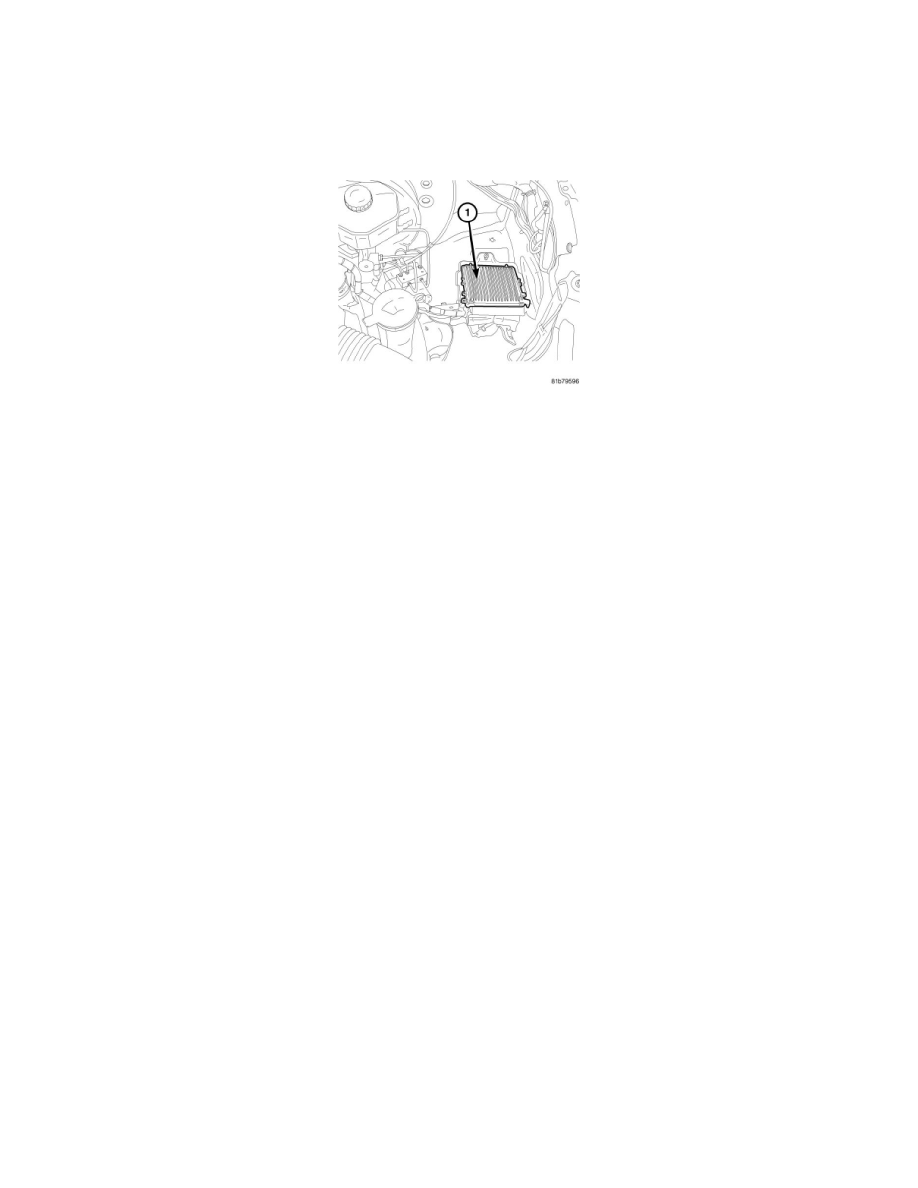Sprinter 3500 V6-3.0L DSL Turbo VIN 45 (2007)

Engine Control Module: Description and Operation
Module-Engine Control Diesel
Description
DESCRIPTION
NOTE: Any time a new ECM is installed, the injector quantity adjustment procedure, also called injector classification must be performed.
The Engine Control Module (ECM) is located in the left side of engine compartment, and is attached to the top of the left fender behind the battery.
Operation
OPERATION
The primary function of the diesel Engine Control Module (ECM) is to operate the following systems:
-
Fuel Delivery and Injection
-
Electronic Throttle Control
-
Glow Plug
-
Emission Control
-
Turbocharger
-
A/C Compressor
-
Starting
The secondary function of the ECM is to provide on-board diagnostics. During engine operation, the ECM monitors engine sensors and their related
circuits for signals that are out of the normal range. The ECM constantly compares input signal voltages from each sensor with pre-programmed values
(the established high and low limits of the input sensor range). If the input signal voltage is not within the established high and low limits of the input
sensor range, a Diagnostic Trouble Code (DTC) will be stored (set) in the ECM memory, where it can be displayed or cleared with a scan tool. If a DTC
is related to the engine or emission system, the ECM will send a signal to illuminate the Malfunction Indicator Light (MIL) in the instrument cluster
module. Each monitored circuit has an associated set of conditions that the ECM must detect before a DTC will set. It is possible that a DTC for a
monitored circuit may not set, even though a malfunction has occurred. This can happen if all conditions for setting the DTC have not occurred. If a
DTC is cleared with a scan tool and the conditions that caused it have not been corrected, the DTC will continue to set.
ECM OPERATING MODES
The ECM is programmed to adaptively control engine systems based on the inputs received from engine system sensors. There are several different
modes of operation that determine how the ECM responds to the input signals.
Ignition Switch On (Engine Off)
When the Electronic Ignition Switch/Central GateWay (EIS/CGW) is turned to the ON position, it will send the ON signal to the ECM through the
CAN-C bus. When the ECM receives the ON signal, it will send a signal through the LIN bus to actuate the glow plug module, which provides battery
voltage to the glow plugs. At the same time, the ECM actuates the fuel pump relay, which battery voltage to the in-tank (low pressure) fuel pump. If the
engine is not started within approximately 4 seconds of the ECM receiving the ON signal from the EIS/CGW, the ECM will turn off the in-tank fuel
pump.
Engine Start-Up Mode
When the EIS/CGW is turned to the START position from the ON position, it will send the ON and START signals to the ECM through the CAN-C bus.
